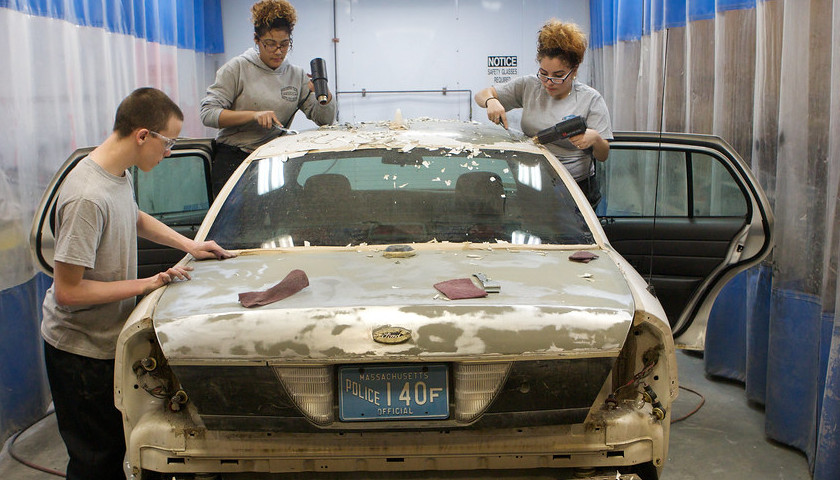The number of Michigan students completing career and technical education programs has increased by more than 75 percent over the last four years, even as the percentage of students in CTE classes has stayed roughly the same, according to a press release from the Michigan Department of Education released this week.
The number of CTE program completers — students who successfully finish all courses in a CTE program and taken the technical skills assessment for the program — increased from 27,014 in the 2014-2015 school year to 47,314 in 2018-2019.
CTE programs are high school programs that help train students for a career in a technical field. Many programs have the opportunity to earn certifications to use directly out of high school.
“Earlier this year, I announced a plan to reach 60 percent of Michiganders with a postsecondary degree or certification by 2030,” Gov. Gretchen Whitmer said in a statement. “To reach that goal, we must continue to ensure people across the state have access to great CTE programs that can prepare them for future success. I’m proud of the work we’ve done, and I’m ready to continue working with everyone who wants to help us take more steps toward 60 percent.”
Even though the completion rate has grown, the percentage of students in CTE classes has seen little growth.
CTE student enrollment numbered 104,038 students in the 2014-2015 school year, around 21.4 percent of all high school students in Michigan, according to data from Student Count. That number grew to 110,506 students in the 2018-2019 school year, roughly 23.4 percent of all high school students in Michigan.
And while the number of CTE programs offered to students has grown more than 18 percent in the past four years, only around 25 percent of students in CTE programs are enrolled in traditional “shop” classes generally associated with technical programs.
Of the 48 CTE programs offered in high schools in 2017-2018, only 23 could be classified as “shop” classes.
“The topics of CTE are pretty good,” said Kent Misegades, an engineer and teacher. But, he said, it’s a “sparse landscape” when it to comes to what is offered by individual schools. Misegades is currently working on a curriculum for shop classes, sponsored by Battleground State News.
Although CTE courses can cover topics like plumbing technology and woodworking, they also include cosmetology and marketing. These courses can be some of the most popular. In 2018-2019, the four most popular courses were Marketing, Sales and Service; Business, Management and Administration; Health Service; and Information Technology. Nearly 50,000 students were enrolled across these four courses.
“The courses or curriculum may be there, but nobody’s offering it,” said Misegades.
Misegades said this can have long-term effects, especially for students who end up pursuing technical careers. He said that many programs past high school focus on theory, rather than practical, hands-on skills.
“The problem is youngsters aren’t exposed to basic mechanical skills at shop or at home,” Misegades said. He says that both the decay of the family and the push for a four-year degree in recent decades has caused a decline in exposure to hands-on trades.
Misegades also insists that the shop classes offered now are missing fundamental “life skills,” comparing it to offering Advanced Placement classes without offering general education courses. That is, even if students take a typical shop class, it could be missing hands-on sections that increase the likelihood of success in their field.
Government officials, however, still seem encouraged by the growth.
“Every Michigander deserves a path to a good-paying job that they can support themselves and their families on,” said Whitmer. “This progress is great news for our families, our businesses, and our economy.
—
Jordyn Pair is a reporter with Battleground State News and The Michigan Star. Follow her on Twitter at @JordynPair. Email her at [email protected].
Photo “Autoshop Class” by the US Department of Education. CC BY 2.0.





